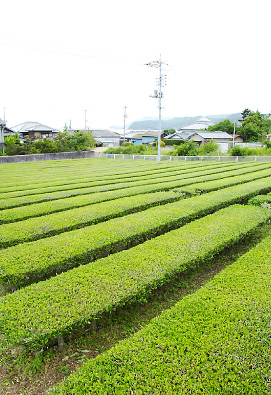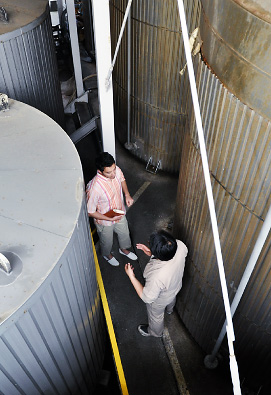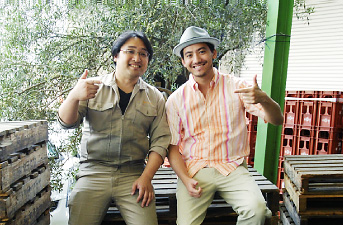| Olives were first cultivated in Japan on the island of Shodoshima where olive oil is now a popular local industry. Yamahisa Co., Ltd. is an olive oil manufacturer. When the director, Katsuhisa Uematsu, invited me to join him for a cup of tea I agreed gladly! The tea he served was greenish gold with a slightly bitter, astringent aftertaste. When I asked what it was, he said, “It’s olive tea. We make it at our company.” Despite being from Italy, this was the first time I’d ever heard of olive tea. |
|
The olive fruit is famous for being rich in healthy polyphenols and vitamin E but the leaves have plenty of these nutrients, too. Mr. Uematsu, seeking to help people enjoy the olive’s health benefits, hit upon the idea of making the leaves into tea. At first he simply used the ones leftover from trimming but he found that mature leaves were tough. “I thought we could get a smoother flavor by blending them with the tender young leaves.” |
|
That’s when he decided to make an olive field specifically for harvesting young leaves. It looks just like a regular tea field but it’s lined with row upon row of neatly trimmed, waist-high olive trees. He introduced large-scale machinery and equipment so that every process from cultivation to the final product could be done in-house. Yamahisa was the first company to make tea solely from olive leaves. This may start a new boom that opens up further possibilities for olives in Shodoshima. |


